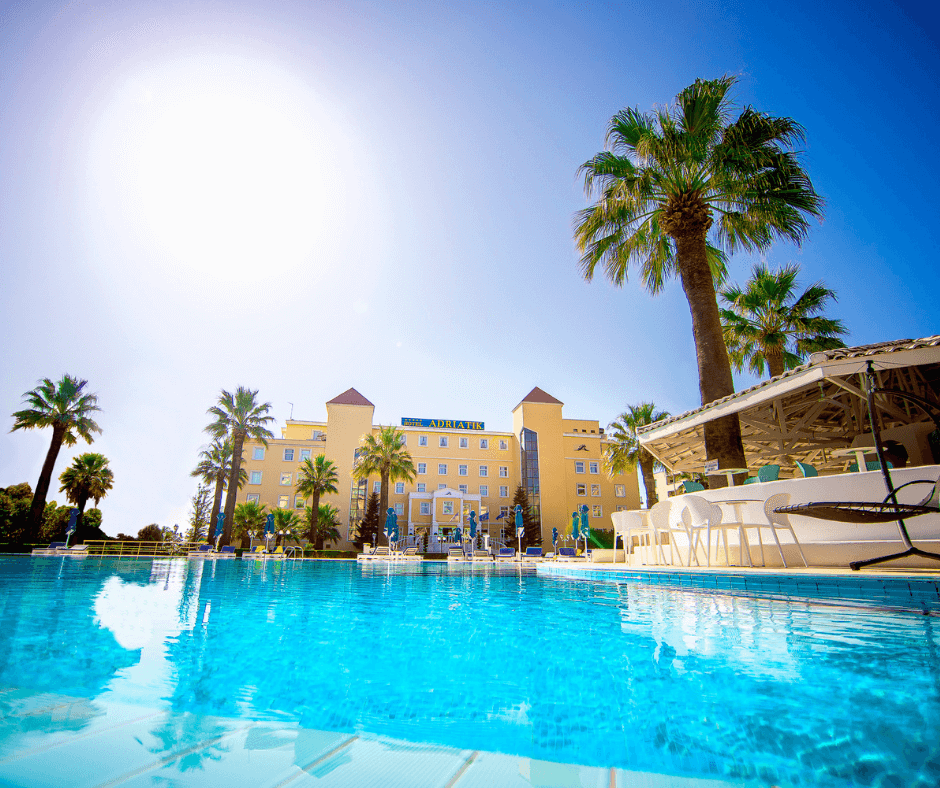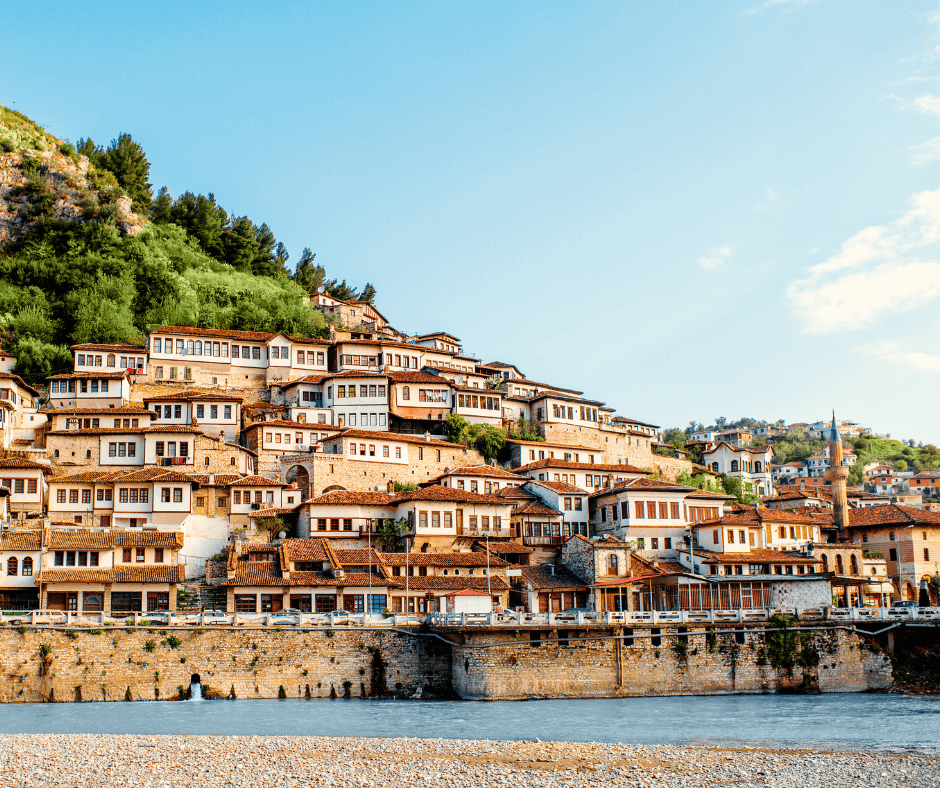Albania, a country of breathtaking landscapes and deep-rooted history, is home to some of the most remarkable UNESCO-listed sites in Europe. From ancient ruins to well-preserved Ottoman-era towns, these cultural gems offer travelers a journey through time, showcasing Albania’s diverse heritage and enduring spirit.
Tucked between towering mountains and the sparkling Adriatic Sea, Albania’s UNESCO World Heritage Sites tell stories of ancient civilizations, medieval empires, and natural wonders. In this travel-inspired exploration, we’ll visit five of Albania’s UNESCO treasures – each a testament to the country’s rich history and awe-inspiring beauty – and discover the magic that awaits in this Balkan jewel.
Butrint – Legends Amidst Ancient Ruins
Walking through the ruins of Butrint feels like stepping into a living time capsule. This ancient city – known as Buthrotum to the Greeks and Romans – has been inhabited since prehistoric times. Legend ties Butrint to the Trojan War; according to myth, Trojan exiles founded the city, imbuing it with epic origins. As you wander its moss-clad stones, you encounter layers of history: a Greek amphitheater where dramas played out over 2,000 years ago, the elegant outline of a Roman forum, and the ornate floor of a 6th-century baptistery decorated with mosaics.
Over the centuries, Butrint fell under Byzantine and Venetian rule and was eventually abandoned after a medieval earthquake. Today, the city’s crumbling stone walls and Lion’s Gate stand guard over a tranquil lagoon, creating an atmosphere both romantic and eerie. It’s easy to imagine ancient inhabitants walking these same paths – merchants in the agora or priests in the basilica – against the backdrop of the bright blue Ionian Sea. Butrint isn’t just an archaeological treasure; it’s also a lush national park teeming with wildlife. The fusion of history and nature here captivates every traveler.
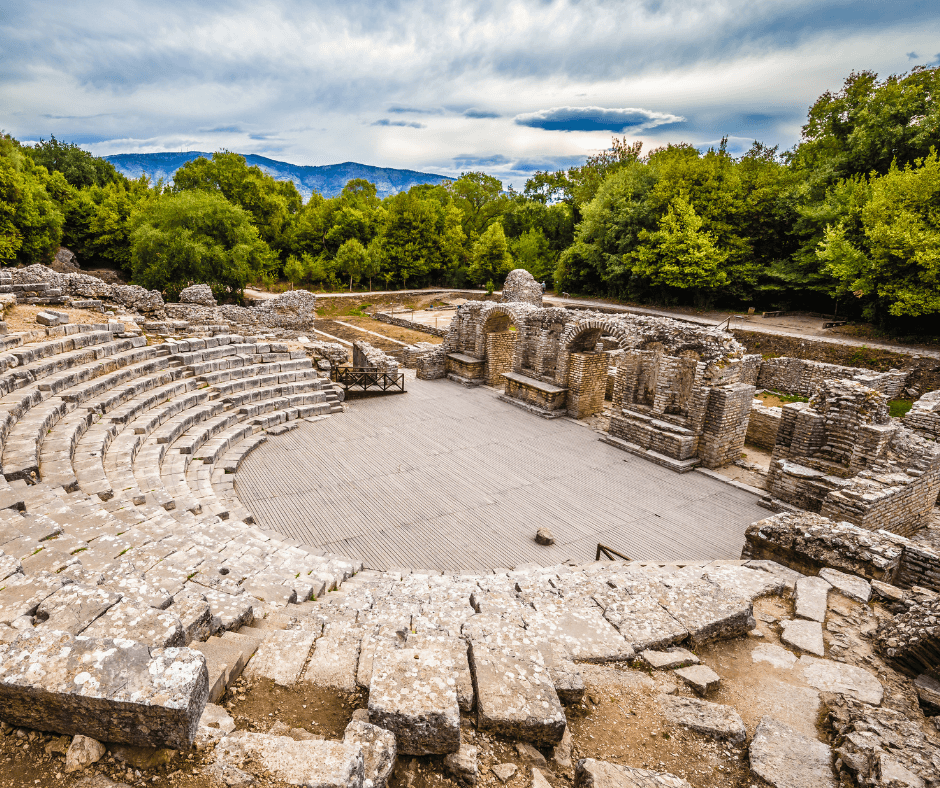
Berat – The City of a Thousand Windows
Nestled in a valley along the Osum River, Berat is a vision of white Ottoman houses climbing a green hillside, their countless windows staring back at you – hence its nickname “the city of a thousand windows.” This 2,400-year-old city is a beautifully preserved museum of architecture and faith.
Strolling Berat’s cobbled streets, you’ll encounter influences from every era of Albanian history. Ancient Illyrian fortress walls form the base of the Berat Castle (Kalaja) that crowns the hill, within which stand Byzantine churches adorned with faded frescoes and icons. Down in the old quarters of Mangalem and Gorica, perfectly preserved 18th- and 19th-century Ottoman houses line steep lanes, their large windows and overhanging balconies creating Berat’s iconic visage.
Many of these historic homes have housed Muslim and Christian families side by side, as Berat is famed for its religious harmony. The cityscape is dotted with both church spires and mosque minarets – from the elegant Sultan’s Mosque to St. Theodore’s Church – reflecting a place where communities coexisted peacefully through the centuries. Whether exploring the Onufri Iconography Museum or sipping coffee by the arched Gorica Bridge, Berat enchants with its soulful and romantic ambiance.
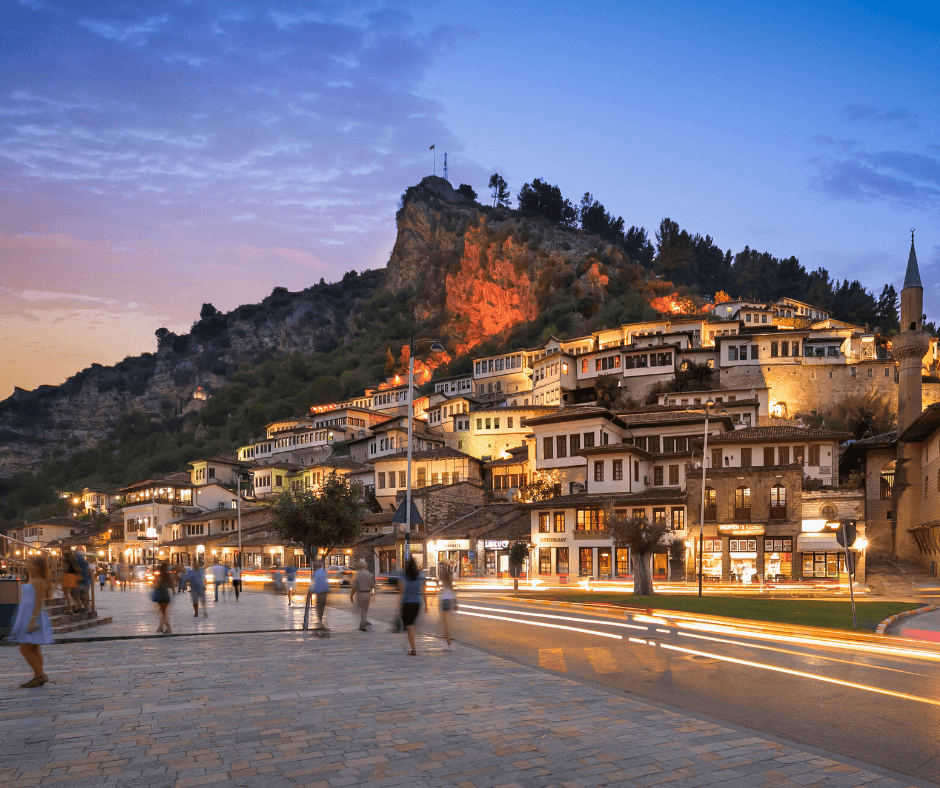
Gjirokastër – The Stone City of Stories
With its steep cobblestone streets and slate-roofed houses, Gjirokastër is a city that wears its history in every stone. Often called “the City of Stone,” this town in southern Albania transports you to an earlier era of pashas and merchants.
Gjirokastër’s Ottoman-era mansions feature distinctive architecture – tall, fortress-like houses with thick stone walls and wooden balconies. As you climb the narrow lanes of the Old Bazaar quarter, you pass under wooden facades and notice intricate detailing in the stonework at every turn. Looming above the town is the mighty Gjirokastër Castle, a 13th-century fortress expanded in the 19th century. Walking its ramparts rewards you with panoramic views of the Drino River valley and surrounding mountains.
Within the castle grounds, old cannons and even a rusting Cold War-era aircraft add to the intrigue. The town is also the birthplace of famed writer Ismail Kadare, and visiting his childhood home-turned-museum offers insight into both his life and the city’s literary soul. Stopping by traditional homes like Skenduli House or Zekate House, you’ll find lavish interiors with carved ceilings and colorful textiles that reflect the Ottoman lifestyle of the time. In the evenings, folk music and the rhythm of daily life echo through the stone alleys, making Gjirokastër feel like a stone-crafted poem, alive with memory.
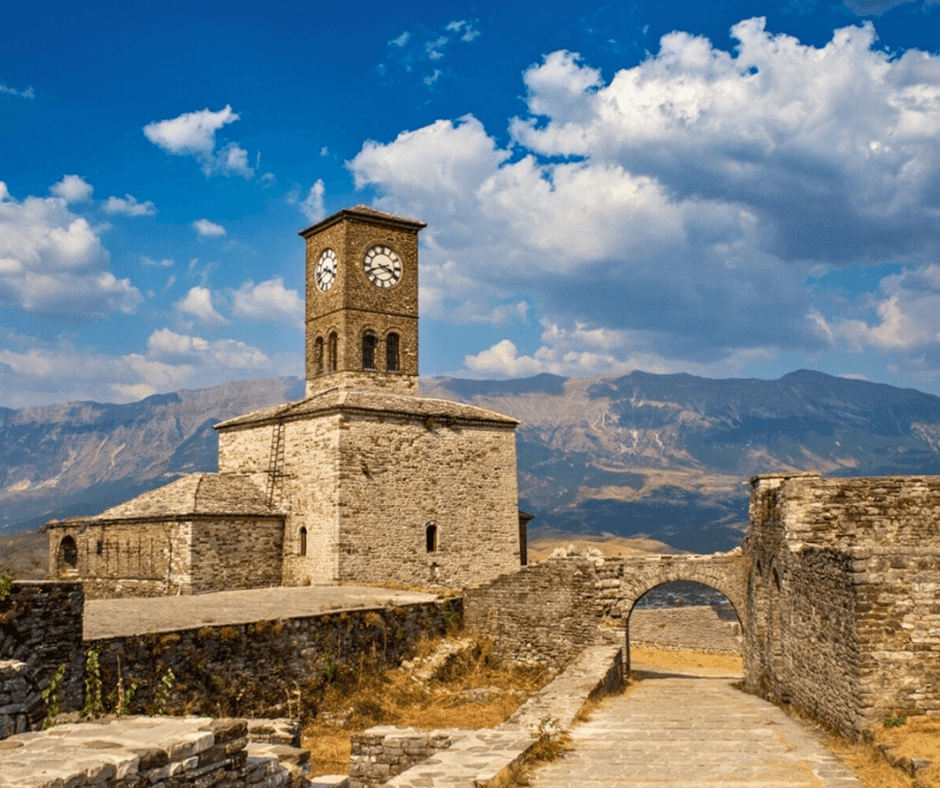
Lake Ohrid – Timeless Waters on the Albanian Frontier
For a change of pace, the UNESCO site of Lake Ohrid offers a blend of natural splendor and cultural depth. Straddling the border of Albania and North Macedonia, Lake Ohrid is one of Europe’s oldest and deepest lakes, celebrated for its crystal-clear waters and historical significance.
On the Albanian side, the lakeside town of Pogradec welcomes visitors with a laid-back charm – a promenade lined with willow trees, traditional restaurants, and 19th-century villas that whisper stories of past summers. Small fishing villages like Lin dot the shore, preserving traditions that date back thousands of years. On the Lin Peninsula, you’ll find the ruins of an early Christian basilica with intricate floor mosaics depicting birds and fish – a rare artistic treasure.
Lake Ohrid’s shores have witnessed the rise and fall of Illyrian tribes, Roman traders, Byzantine monks, and Ottoman merchants. It is a place where time drifts slowly, and the lake’s mirrored surface reflects both history and horizon. Nature lovers are equally rewarded here: the lake is home to rare species, and the surrounding mountains offer scenic hikes and quiet moments of serenity. Whether you’re enjoying grilled fish by the water or watching the sun dip below distant peaks, Lake Ohrid invites you to experience a sense of timeless peace.
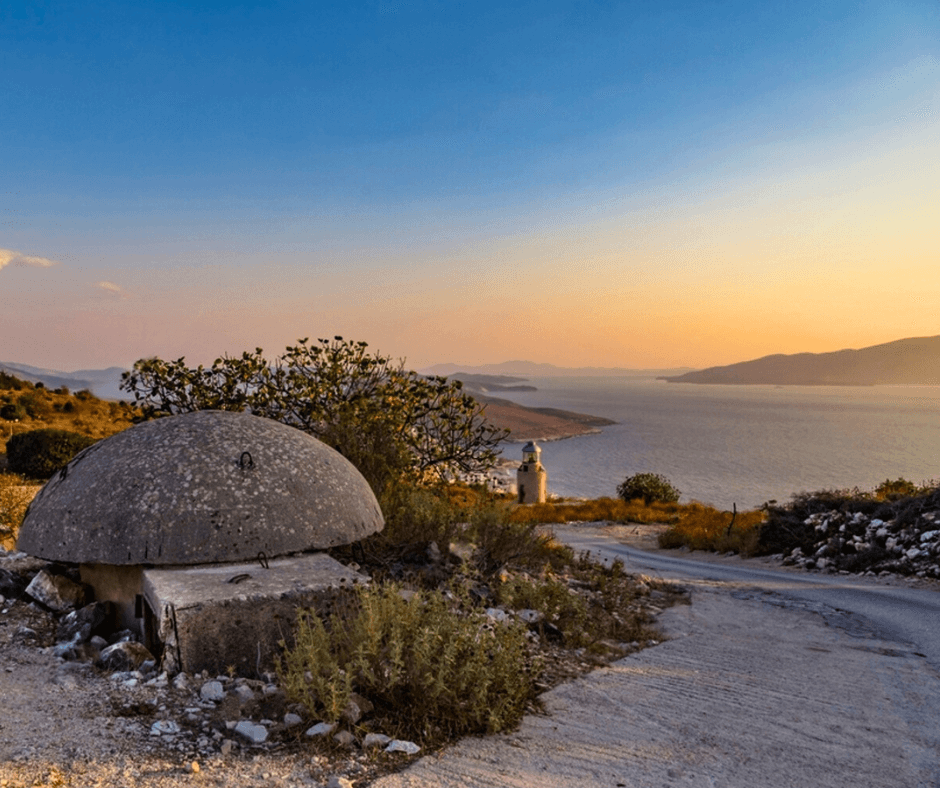
Ancient Beech Forests – Into Albania’s Wild Heart
Beyond towns and lakes, Albania also guards a natural UNESCO treasure deep in its wild heart: the Ancient and Primeval Beech Forests of Europe. As part of a transnational World Heritage listing, Albania’s contribution includes two pristine forest areas that offer a rare glimpse into Earth’s untouched ecosystems.
In the far north, within the Valbonë Valley of the Albanian Alps, the Gashi River Nature Reserve stretches through a dramatic landscape of mountains and mossy woods. Towering beech trees, some centuries old, create a canopy under which rare wildlife thrives – including lynx, bears, and eagles. A walk through this forest is a meditative experience: cool, quiet, and awe-inspiring.
In central Albania, the Rrajcë beech forest within Shebenik-Jabllanicë National Park offers another vision of wild beauty. These forests have been spared from development for generations, allowing nature’s rhythms to continue undisturbed. The air here is fresh and filled with birdsong, and every footstep brings you closer to understanding the deep connection between land and life. These forests aren’t just beautiful – they’re vital living laboratories, offering a glimpse into post-Ice Age Europe.
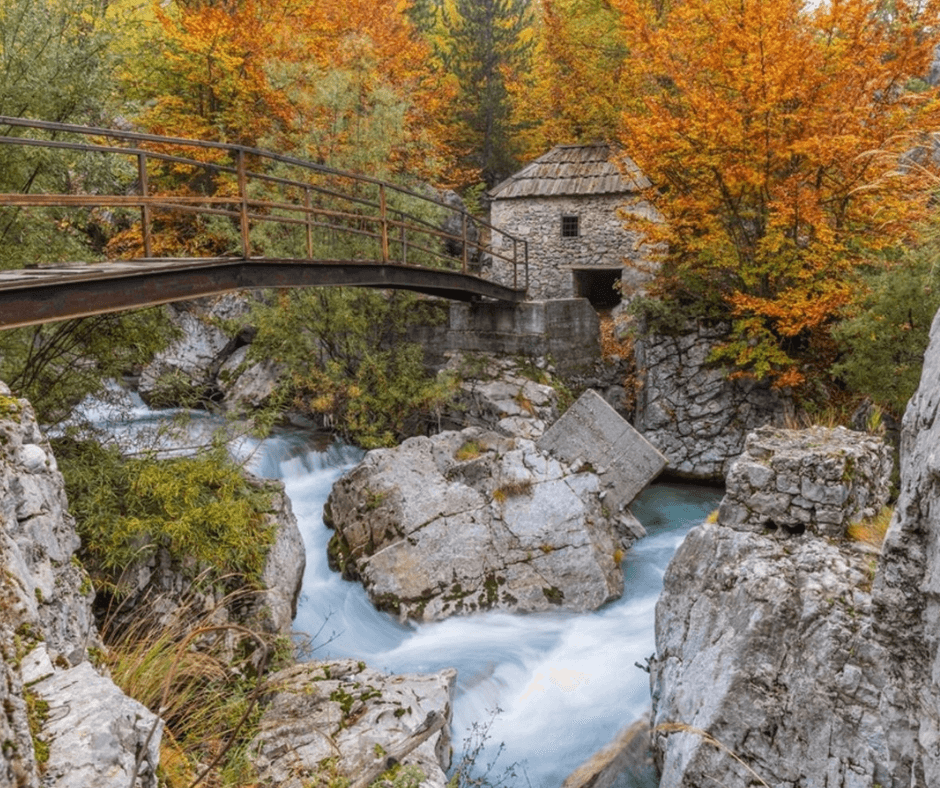
A Heritage Haven by the Sea – Adriatik Hotel, Durrës
After immersing yourself in Albania’s cultural and natural heritage, there’s no better place to relax than the Adriatik Hotel in Durrës. Perched on the shores of the Adriatic Sea, this iconic hotel blends historic charm with modern luxury. Originally opened in 1957 as Albania’s first five-star hotel, Adriatik has hosted generations of travelers, diplomats, and artists.
Today, its elegant rooms, private beach, serene spa, and fine dining create a perfect setting for reflection after a day of discovery. Whether you’re lounging by the pool, savoring fresh seafood, or exploring the ancient city of Durrës just minutes away, Adriatik Hotel offers a cultural escape in itself. It’s more than a place to stay – it’s a destination that celebrates Albania’s proud legacy and warm hospitality.
